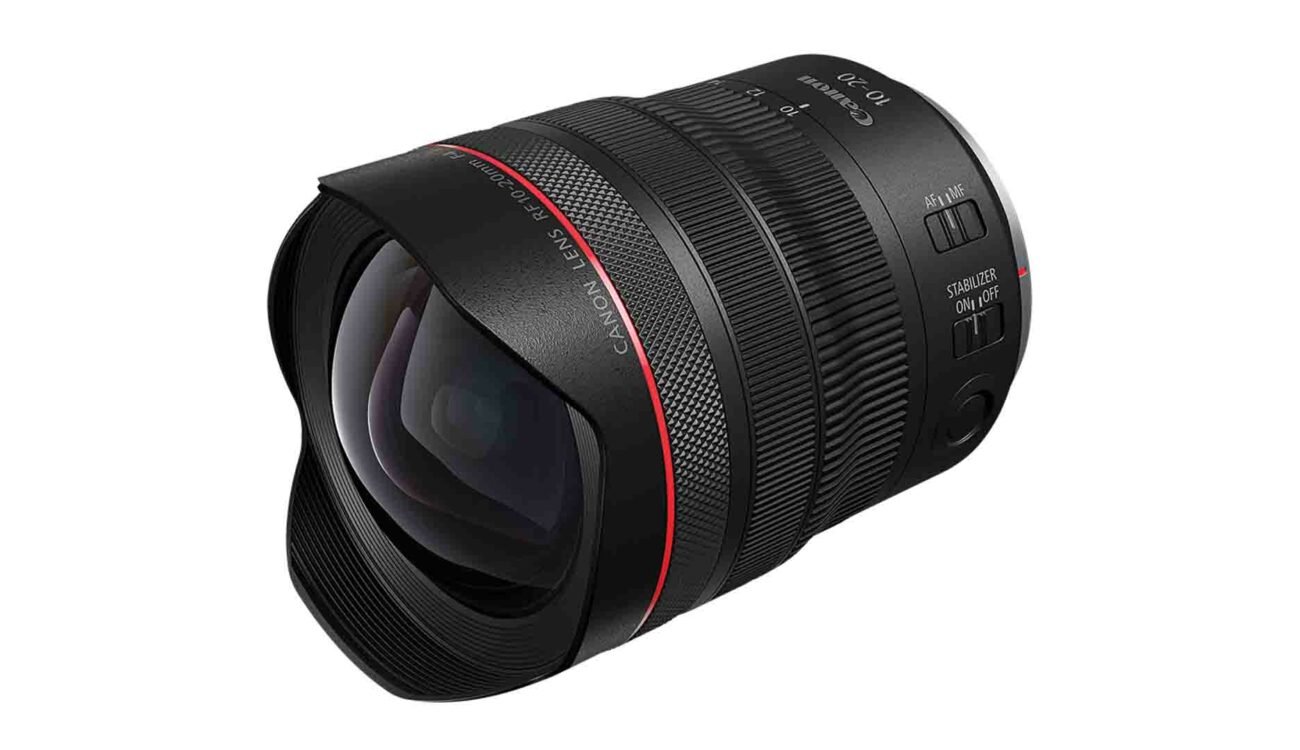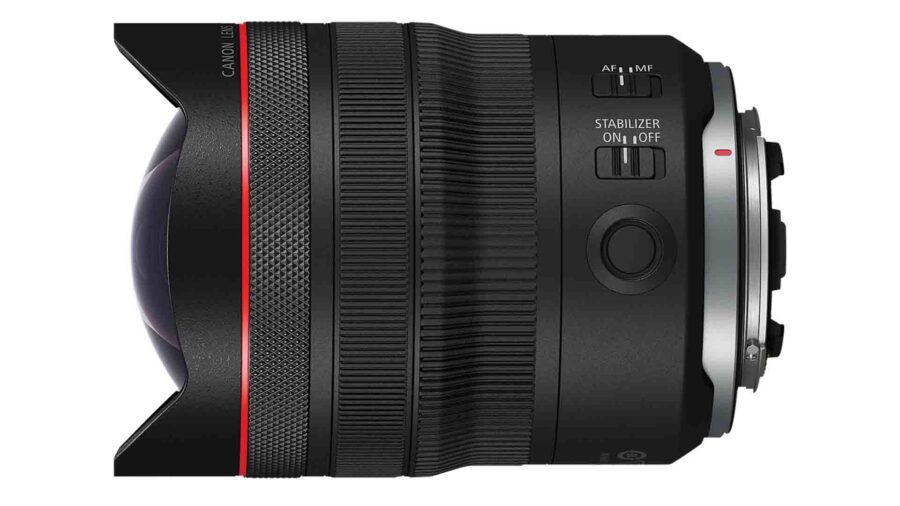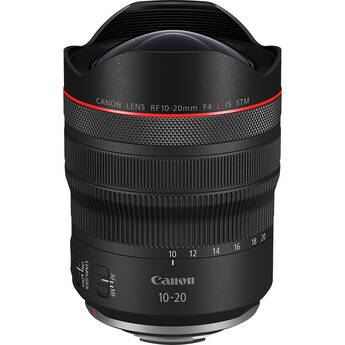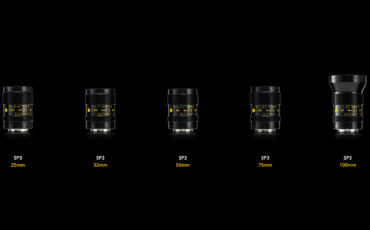
Canon have a tradition of ingenuity and innovation. The company’s lens lineup is probably the largest and most versatile in the market, ranging from extremely niche glass to the most mainstream, from long tele to ultra-wide at various price points. Today, Canon stretches their optical envelope a little further with the world’s widest AF zoom lens, the new Canon RF 10-20mm f/4 USM L IS STM.
More than sheer numbers
Though the numbers are impressive, the lens has additional tricks up its sleeve. First, it’s important to mention that it is a rectilinear lens (as opposed to a Fisheye). Straight lines will be rendered as straight lines across the entire frame. The new Canon is also a constant aperture lens with max f/4 all across the short zoom range. Optical image stabilization (IS) is also onboard, a rarity in ultra-wide lenses. This iteration will sync with both mechanical IBIS and video-oriented electronic stabilization. It should (in Canon’s theory at least) prove useful for both photo and video applications. Canon recommends using IS+IBIS for static conditions (a tripod replacement) and adding electronic stabilization for more dynamic scenes such as walking, etc.

Image credit: Canon 
Image credit: Canon 
Image credit: Canon 
Image credit: Canon
Mechanical and optical features
As an RF L lens, the new Canon RF 10-20mm f/4 USM L IS STM will incorporate Canon’s professional features. Three control rings (Zoom, Focus, and Fn), AF and IS switches, and an additional custom button will help control both the lens and camera. The lens is sturdily built to professional standards with extensive weather sealing and a fluorine coating on the bulbous front element. A petal-shaped hood is built-in and, as expected from such an extreme design, there’s no filter thread. Perhaps the most impressive design feat Canon has accomplished with the Canon 10-20mm is its size and weight. Though wider than its predecessor, the 10-20mm manages to shave off about half the weight of the massive EF 11-24mm f/4’s 1180g, and will only weigh 570g. The Canon 10-20mm is also considerably shorter and thinner, and will easily fit into any gear bag or pouch.

The Optical formula consists of 16 elements in 12 groups, 3 aspherical elements, 3 UD lenses, and one Super UD lens. Minimum focus range is 25cm, but you probably aren’t expecting macro capability from this kind of lens.
The mirrorless revolution
The key to the radical differences between the DSLR-age 11-24mm to the current RF 10-20mm lies in the mirrors revolution. I won’t get too technical about optical theory but will say that the short flange distance of the RF mount (and other mirrorless mounts as well) creates a new world of achievable optical designs, impossible on the long flange distance required by the mirror boxes of old. In recent years we’ve seen some exciting realizations of these theoretical advantages from various manufacturers, and now Canon has taken it another step forward with what is probably the widest AF zoom lens in existence. We have no hands-on experience but if history can teach us something, this RF lens will probably outperform its EF siblings.
The Secrets of Optics
Who is the Canon RF 10-20mm f/4 USM L IS STM for?
Extreme field of view will suit extreme use cases, so this lens might not be Canon’s bread-and-butter lens. Its zoom functionality does broaden its use-case coverage, so it’s not as niche as the 9-10mm prime lens, the only lens that may challenge it in terms of extreme wide angle.
Such range may fit the bill of some architecture, landscape photography, or filmmaking. The lens’s relative compactness and robust build make it suitable for outdoor or travel. It will be great for dynamic, action-oriented projects and will excel when used as a crash-cam lens. Attached to an EOS R5 C it may produce high-res 8K video for additional cropping. Bear in mind that only Canon’s RF cameras may mount this lens, so no luck for Canon EOS C500II users this time…

Image credit: Canon 
Image credit: Canon 
Image credit: Canon 
Image credit: Canon
Alternatives to the Canon RF 10-20mm f/4 USM L IS STM
Comparable field-of-view is rather hard to come by and is mostly limited to manual prime lenses: There’s the Laowa 9mm 5.6 FF-RL. Currently the world’s widest FF rectilinear lens, but it lacks electronic contacts (including AF, IS, etc.), is a full stop slower, and probably not as good optically. Samyang’s 10mm f3.5 XP represents a more modern optical approach. It boasts a complex optical formula, and electronic contacts (for EXIF and aperture control, no AF or IS). It will mount on an EF mount, so it’s much more adaptable. The Samyang is considerably heavier at 731g and will require an adapter if used on mirrorless cameras. The lack of a zoom mechanism will limit usage at slightly more mainstream angles. Laowa’s 10-18mm 4.5-5.6 FE C-Dreamer may look like a worthy opponent in terms of FOV but complex distortion combined with the lack of EXIF data for correction disqualifies it for many purposes. Canon’s own 11-24mm f/4 L might be the closest alternative, but the new lens provides multiple advantages as mentioned above, and is pricier.
Price and availability
The Canon RF 10-20mm f/4 USM L IS STM will set you back $2299. While not cheap, this price will open up some very interesting, industry-leading, and quite unique possibilities. Lens availability is scheduled for November.
Will such an extreme lens find a place on your gear list? What are its advantages to your workflow? Let us know in the comments!





























